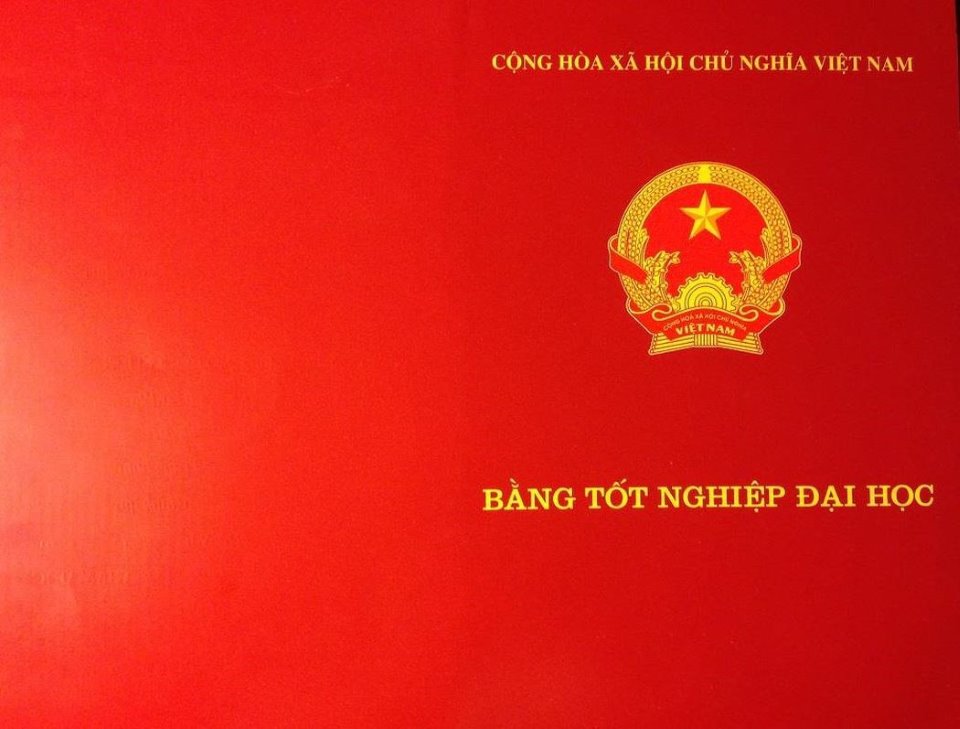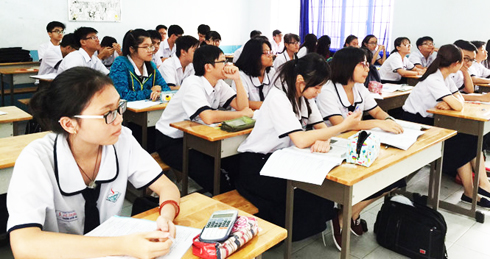Recently, the Draft Circular on issuing Regulations on the main content recorded on higher education diplomas has been put forward for public consultation. One notable point in this document is that university diplomas will no longer indicate the classification and form of training. So, does this mean there will soon be no distinction between a degree of good or excellent, full-time, or part-time study? Secretary of Law specifically clarifies as follows:

In the future, will there be no distinction between teacher training levels as good, excellent, or outstanding? (Illustration)
According to Clause 3 Article 1 of the Law on Amending and Supplementing Higher Education 2018, amending and supplementing Article 6 of the Law on Higher Education 2012, the training levels of higher education include undergraduate, master's, and doctoral levels. The forms of training for awarding degrees in these higher education levels include regular, in-service, and distance training. The transition between training forms is to be conducted on the principle of articulation.
Meanwhile, Clause 23 Article 1 of the Amended Law on Higher Education 2018, supplementing Article 38 of the Law on Higher Education 2012, clearly stipulates that higher education diplomas within the national education system include bachelor's degrees, master's degrees, doctoral degrees, and equivalent level diplomas.
It can be observed that, according to this regulation, regardless of the training form, be it regular, in-service, or distance learning, upon the completion of the training program and meeting the graduation standards, a degree at the corresponding training level will be awarded, specifically a bachelor's, master's, doctoral degree, or an equivalent level diploma.
The Education Law 2019, effective from January 1, 2020, also clearly stipulates that diplomas and certificates issued by educational institutions of various types and forms of training within the national education system have the same legal value. This means that students taking different forms of training upon graduating from university will have equal opportunities in diploma recognition.
To be specific, the Draft Circular issuing the Regulation on the main contents recorded on higher education diplomas including bachelor's, master's, doctoral, and honorary doctoral degrees also clearly specifies the following 10 main items on higher education diplomas: Title “SOCIALIST REPUBLIC OF VIETNAM”; Name of the degree by training level (bachelor's, master's, doctoral); Name of the educational institution issuing the diploma; Full name of the degree recipient; Date of birth of the degree recipient; Nationality of the degree recipient; Field of study; Place, date of issuance of the diploma; Full name, title, signature of the authorized person issuing the diploma and official seal; Serial number, number in the original ledger of the diploma.
Thus, it is evident that compared to the current regulations in Circular 19/2011/TT-BGDDT, there will be some notable changes in how the contents are recorded on university graduation diplomas:
First, the graduation diploma will no longer record the classification of graduates as excellent, good, fairly good, fairly, or average. Currently, graduates are differentiated by these classifications on their diplomas.
Second, the diploma will no longer record the form of training such as regular, in-service, distance learning, or guided self-study. Currently, graduates are clearly differentiated by these forms of training on their diplomas.
Third, the name of the undergraduate diploma will be uniformly referred to as a bachelor's degree, without distinction by training fields. Currently, this name differentiation exists.
It seems that these regulations in the Draft have met with considerable controversy. Many worry that removing the classification and form of training on university diplomas would lead to an equalization in assessing academic results, with excellent, good, or poor academic performance being regarded the same and no difference between regular and in-service learning, making it unnecessary for students to strive for excellence or spend time in regular education.
However, it appears that people misunderstand the legal regulations. To be specific, the amended law specifies that the Minister of Education and Training has the authority to stipulate the detailed main contents recorded on the diploma and its appendix. Thus, the law also stipulates that university graduates will be issued a diploma and a diploma appendix.
Therefore, it should be emphasized that it is not about removing the classification of graduation but transferring this information from the diploma to the diploma appendix to be more specific, detailed, and comprehensive. The specific contents recorded on the diploma appendix are stipulated in a circular issuing the regulations on managing diplomas from secondary education to higher education and certificates within the national education system, which is being prepared for issuance - Assoc. Prof. Dr. Mai Van Trinh, Director General of the Quality Management Department, Ministry of Education and Training, shared with the newspaper Tuoi Tre about this issue.
According to Assoc. Prof. Dr. Mai Van Trinh, in addition to personal information, the diploma appendix will contain information about the training and degree issuance process, including the name of the higher education institution, field of study, specialization, place of training, language of instruction, training duration, form of training. The appendix will also have full information on academic results, course titles or subjects, credits for each course or subject, scores, total accumulated credits. The diploma appendix will also contain information on the average score, thesis title, thesis results (if any), classification of graduation score.
Additionally, the Draft Circular issuing the Regulation on the main contents recorded on higher education diplomas also allows higher education institutions to add other contents on the diploma in accordance with legal regulations.
Thus, it is evident that the information on graduation classification, form of training like regular, in-service, or distance learning will no longer be the main contents recorded on university graduation diplomas but will be specified in the diploma appendix. This will ensure that employers still have the basis to screen candidates in the recruitment process. Hence, there will be no situation where poor or excellent graduation, regular or in-service training is regarded as the same.
Nguyen Trinh
 Article table of contents
Article table of contents





.Medium.png)
.Medium.png)
.Medium.png)
.Medium.png)
